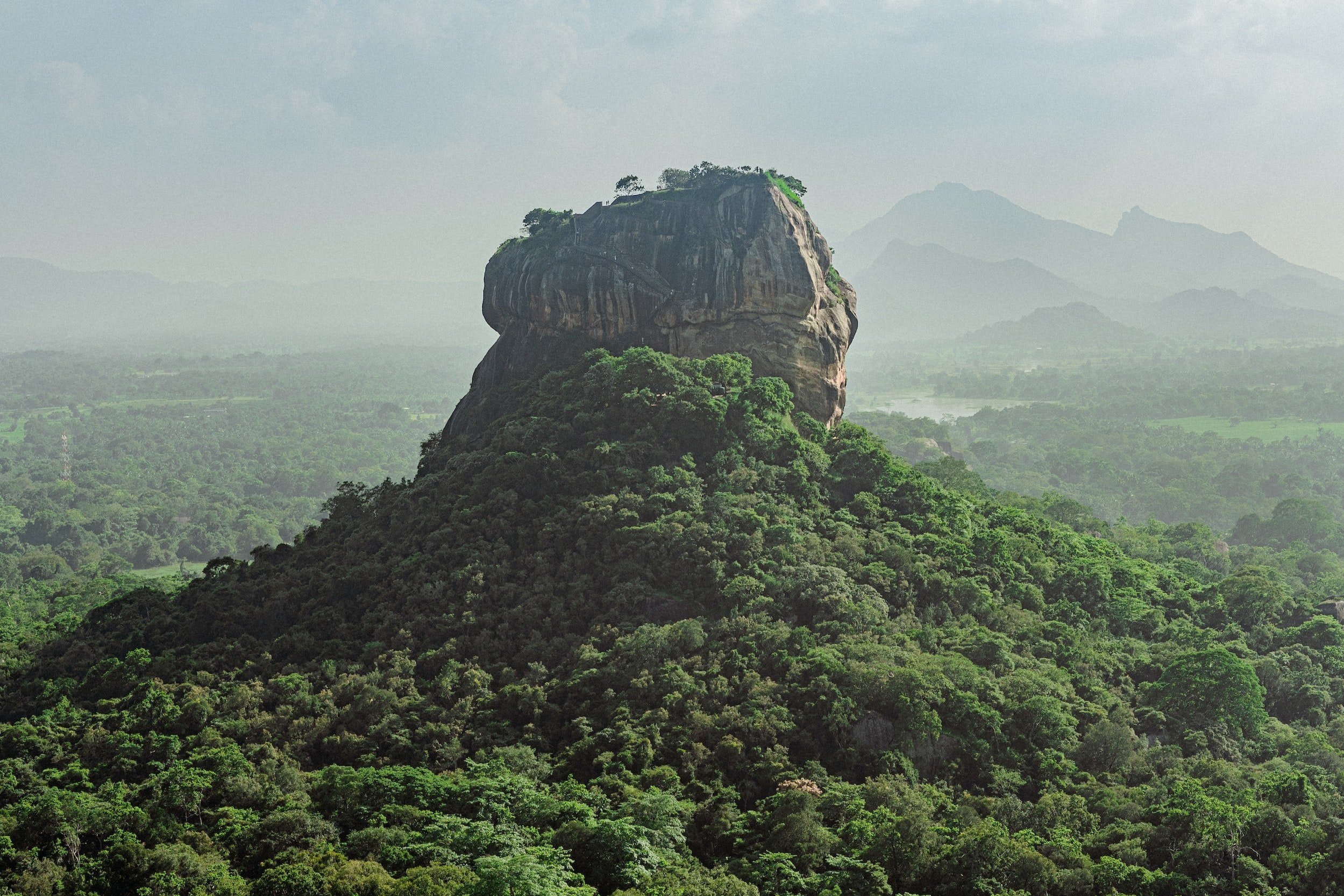Aragalaya Blues
By Richard Simon
August 2022
Hours after Sri Lanka’s president-by-accident Ranil Wickremasinghe took his oath of office late last month, the US ambassador, Julie Chung, tweeted that she looked forward to working with him and urged ‘all parties’ to ‘uphold democracy and accountability.’ Ms Chung’s tweet did not wear well: the following morning, during the wee hours, a force of police commandos, all masked and wearing body armour, descended on #GotaGoGama, the protest campsite in front of the presidential secretariat in Colombo, and began shoving people about. A BBC reporter was beaten up and the pictures he had taken were wiped from his camera. Others, too, were roughed up. In the weeks since, leaders of the protests (which were almost entirely peaceful) have been harassed by the authorities, and some have been imprisoned. One activist, attempting to flee the country, was literally dragged off the plane by state agents while his fellow passengers angrily protested and tried to thwart the arrest by interposing their own bodies.
Instead of being elected by the people, Ranil – we’re all on first-name terms here in Paradise – was appointed by his predecessor. Notwithstanding the claims of various parties, there is nothing in the least constitutional about this. Lanka’s last president, Gotabaya Rajapaksa, bolted from office on 9 July, literally minutes before unarmed but angry protesters broke down the front door of what we older locals still call Queen’s House. From Singapore, where he had managed with some difficulty to flee, he emailed his fellow-countryfolk his letter of resignation, in which he also named Ranil as his successor. As expected, Parliament voted to confirm the substitute (but not ‘acting’) president in office.
This is pretty rich, seeing he wasn’t even elected to this Parliament to start with. His United National Party, which once dominated politics here, failed to win a single seat at the last elections, yet Ranil managed to squeeze into Parliament through the ‘national list’, a handful of supplementary seats awarded to successful parties. The Rajapaksas, whose own party won a two-thirds majority, were happy to have him in the House; Ranil has been prime minister for six truncated terms already and achieved nothing useful, but he helped save them from the consequences of misgovernment and kleptomania following their previous expulsions (yes, twice; do we ever learn?) from power. He seems intent on doing so again.
Gotabaya, meanwhile, is said to be desperately canvassing governments all over the world for a place to live. More likely, he’s waiting till Ranil makes it possible for him to return home in safety. Other members of the Rajapaksa clan, the former prime minister and the ex-minister of finance among them, are still here, biding their time until the new president claws some order back from the chaos they created. The family still cherish hopes of a return to power some day. The appalling results of their rule – daily power cuts, mothers going hungry to feed their children, pensioners dying in cooking-gas queues, motorists murdering each other at petrol stations – mean nothing to them. Such is their cynicism that they believe Lankans will soon forget these hardships and be bamboozled yet again by the old formula of Sinhalese supremacism, cronyish state capitalism and subsidised handouts to the ethnic vote-base, paid for with foreign credit. The Rajapaksas only fell this time because no-one would lend Sri Lanka any more money. They hope that Ranil, given a few months, will be able to solve that problem for them, too. Colombo’s Anglophone bourgeoisie largely share that hope, and have obligingly swapped protesting for singing Ranil’s praises.
It is possible that they will be proved right. Not about the lending – our credit abroad is literally less than zero – but about the old familiar juice working once again. It has done so, after all, since 1931, when Ceylon, as it was then known, became the first democratic country in Asia despite the fact that over half its population was illiterate and most of the rest had never completed junior school.
“The appalling results of their rule – daily power cuts, mothers going hungry to feed their children, pensioners dying in cooking-gas queues, motorists murdering each other at petrol stations – mean nothing to them.”
There’s a case to be made that Lanka’s present troubles began with the Donoughmore Commission of 1927, which recommended universal franchise for Ceylon to the Colonial Office. Dominated by the Scots Labour MP Drummond Shiels, the commission ignored the dire warnings of Lankan constitutional activists, whom they pooh-poohed as an effete native elite, and bet the country’s future on the masses. The elite accepted this fait accompli and promptly began competing for seats on the newly-created State Council, wooing voters with exactly the same tactics they had earlier warned the commissioners about: promises of government handouts, racial and caste scaremongering and the stirring-up of resentment against the English-speaking elite to which they themselves belonged.
It worked, and has worked at every election since. Lankans, particularly those belonging to the rural Sinhalese majority, grew accustomed to free rice, education and healthcare, and massive subsidies on just about everything else, and gradually forgot that, as Kipling put it, if you don’t work you die. The present crisis is reminding us of this inconvenient truth.
For decades, we refused to face it. Instead, we blamed our troubles on world commodity prices, minority races and castes, foreigners (particularly the former colonial power) and the English-educated. Thus the modern history of Ceylon and its ethnocratic successor-state, Sri Lanka: a dictatorship of the majority, economic bungling, unbridled corruption, pogroms, youth uprisings, failed coups, civil war. The old Anglophone elite clung to power for as long as it could, but lost its grip in the Eighties; Ranil Wickremasinghe is its last representative in active politics.
There is a new elite now, grandchildren of the small-town Sinhalese petit-bourgeoisie that prospered for half a century on government handouts, make-believe jobs in state enterprises and the gradual exclusion of minorities from economic activity. It imitates the old elite so well that it is hard to tell them apart till you hear them speak – or try to speak – English. This is no inconsequential difference: it represents a near-unbridgeable cultural gulf.
Yet superficially, at least, the old ways persist. A few days ago, I walked down to the liquor store past a kilometre-long line of vehicles – tuk-tuks, tiny Indian-made cars and vans, the odd Japanese hatchback – all queued up for strictly-rationed petrol. The drivers were clubbing together to push one another along, one car, one car-length at a time. As I walked alongside, I heard ugly thumping music emerging from a row of warehouses near by. Someone was holding a gym class. Drawing nearer, I saw the new elite on invidious display through wide-open warehouse doors: the women sleek in their yoga pants, the men all ripped and hunky. An adjoining lot held their cars: mostly Mercs and BMWs, with a few Toyota Landcruisers and a Range Rover Sport to add variety. No fuel shortages for this lot. The peasants in the line pretended not to notice, their eyes resolutely downcast as they shunted their own modest machines along.
The queues have since got shorter (there’s a rationing system, twenty litres a week for cars, ten for tuk-tuks, four for bikes) and the power cuts have eased. This, together with the fear of cudgels (or bullets) has taken the stuffing out of the protest movement. All, for the time being, is quiet. But then, it always is in Sri Lanka, until it breaks out in a bloodbath. I know my people well, and I am terribly afraid.


